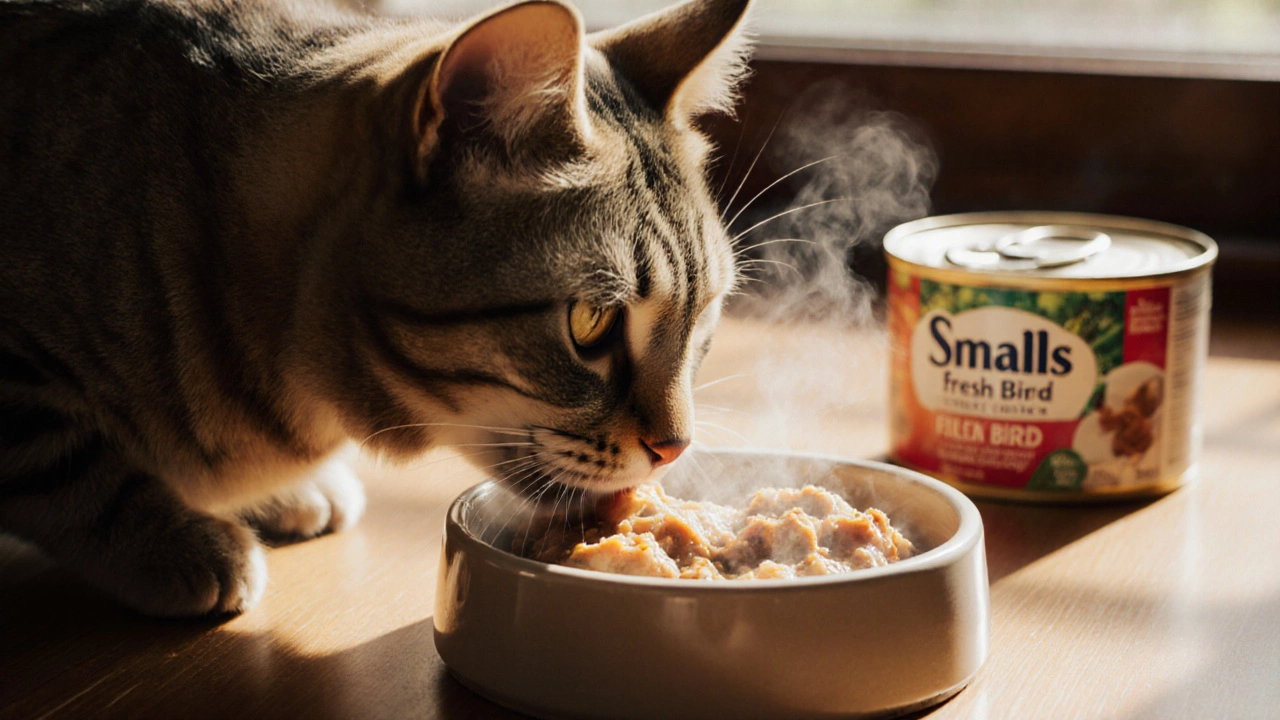Wet Food for Cats: What Really Works and What to Avoid
When it comes to wet food for cats, a moisture-rich, protein-focused diet designed specifically for feline biology. Also known as canned cat food, it’s not just a preference—it’s often a necessity for long-term health. Cats are descended from desert animals, so they don’t naturally drink much water. That’s why wet food, which is 70-80% water, isn’t optional for many cats—it’s life-saving. Skipping it can lead to urinary issues, kidney stress, and chronic dehydration, even if your cat has a water bowl full to the brim.
Not all wet food is created equal. The real difference lies in the protein source, the primary ingredient that determines nutritional value. Look for meat, fish, or poultry listed first—not gravy, broth, or filler. Brands that use whole animal proteins instead of by-products or plant-based fillers are the ones that match your cat’s natural diet. And don’t be fooled by labels like "premium" or "gourmet"—those mean nothing without a clear ingredient list. The best wet food for cats gives them the right balance of taurine, arginine, and moisture without artificial colors, flavors, or preservatives.
Another big factor is cat hydration, the body’s ability to maintain fluid balance through diet. Dry food might be convenient, but it’s like feeding your cat chips every meal. Wet food naturally supports kidney and bladder function, reduces the risk of crystals and blockages, and helps overweight cats feel fuller with fewer calories. Many vets now recommend wet food as the default, especially for older cats or those with urinary tract history. Even if your cat seems fine on dry food, switching to mostly wet can prevent problems before they start.
And then there’s the question of mixing wet and dry. Some owners do it to save money or please picky eaters, but it’s not always a smart blend. Mixing can confuse digestion, dilute nutrient density, and make portion control harder. If you’re going to mix, do it with purpose—use wet food as the main meal and dry as a snack, not the other way around. And always check the calorie counts. A small can of wet food might have the same energy as a full cup of kibble, so overfeeding is easy.
What you won’t find in most store aisles are the hidden truths about cat food. Like how some "healthy" brands use cheap fillers disguised as vegetables or grains. Or how fish-heavy diets can lead to mercury buildup over time. Or how the same brand might have different formulas in different countries. That’s why reading labels matters more than brand names. The top-rated wet foods for cats aren’t the ones with the flashiest packaging—they’re the ones with simple, meat-first ingredients and no surprises.
There’s no one-size-fits-all answer, but the science is clear: wet food for cats supports better digestion, healthier weight, and longer life. Whether your cat is a kitten, a senior, or somewhere in between, the right wet food can make a real difference. Below, you’ll find real reviews, comparisons, and expert advice on what actually works—and what’s just marketing.
Posted By Bryndle Redding On 20 Nov 2025 Comments (0)
What Is the Healthiest Wet Food for Cats? Expert Guide to Choosing the Best Option
Discover the healthiest wet food for cats based on real nutrition science. Learn what ingredients to look for, which brands deliver real value, and how to switch safely for better long-term health.
READ MORE